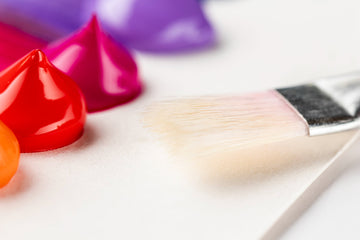The use of chafing dish is associated with class, buffet arrangements, servicing, and formal events. After time, even the best stainless steel or silver chafing dishes can be dulled by wear and tear, stains and heat. What is needed is to know how to clean and polish such items properly, which not only preserves their aesthetic characteristics but also provides higher hygienic and durability issues.
Here in this tutorial, we shall take you through the process of buffering the chafing dishes in an effective manner without destroying them using safe materials and easily found materials.
Why Polishing Chafing Dishes Is Important?
It is not merely a cosmetic thing to polish your chafing dishes. A clean buffet set will improve the presentation and even avoid decay of the material as time goes by. Leaving food residue, fingerprints, water stains or fuel may destroy the surface over time and the surface may not be washed properly.
Polishing regularly will ensure that you avoid tarnish, shield against corrosion and ensure that your serving equipment always looks brand new before every party.
Before You Begin
To begin with the polishing process collect the following items:
- Mild dish soap
- Warm water
- Soft microfiber tissues
- The baking soda (gentle abrasion)
- White vinegar or lemon juice (to take away the spots)
- The stainless steel or silver polish (according to material)
Abrasive pads or heavy chemicals such as bleach should be avoided, because these can pull the surface.
Technique of Polishing Chafing Dishes Step by Step
1. Surfacing Cleansing
Then first wash the stainless steel chafing dishes in a soapy water. This scrubs away food residues, grease and loosely stained items. Clean it off a non-abrasive sponge with water. Surface dry with a microfiber cloth to avoid water marks.
2. Get Rid of Scuffing Marks
In case you can detect water marks or mineral deposits, combine equal portions of vinegar and water. Softly rub the soiled spots with a piece of cloth dipped in this solution. To polish lightly tarnished or discolored pieces a paste made of baking soda (mixed with water) may be placed on and wiped off in a few minutes.
3. Apply the Polish
After it has been clean and dry, apply a little stainless steel or silver polish. Always use a clean cloth and wipe with the grain of the metal particularly with stainless steel dishes. Curl and rub evenly. Wait according to manufacturer directions and rub off the excess polish with new microfiber cloth.
4. Focus on Details
Polish the handles, legs and lids, as these areas tend to accumulate fingerprints, and get polish worn off sooner. Take the similar approach to these little spaces and smooth them with wonderful care.
Maintaining the Shine
Keep the dishes dust-free after glass-polishing and use sponge cleaning them every time. After washing, it is very important to dry it in order to avoid watermarks. Periodic maintenance means that you will need to do minimal polishing to bring your buffet to a professional appearance.
What should be avoided on polishing
- Omitting the part of cleaning, and polishing without cleaning
- Applying steel wool or scrubs with abrasives
- Applying excessive polish (there is no need to apply a lot)
- Leaving washed dish wet
Caution on daily maintenance can make differences in how long your chafing dishes can last and how attractive they appear.
Tips to Long-Term Care Chafing Dishes
Polishing your chafing dishes is only one way of ensuring that these are in a perfect state. A regular care system should be employed to make them look and feel good and be usable in years to come.
Immediately the dishes are used, they should be washed before the food stains could harden. Regularly soft cloths should be used to dry it since air-drying may cause the mineral deposits. Never keep your chafing dishes in wet places as this may cause them to be discoloured or maybe corroded in the joints and the hinges.







